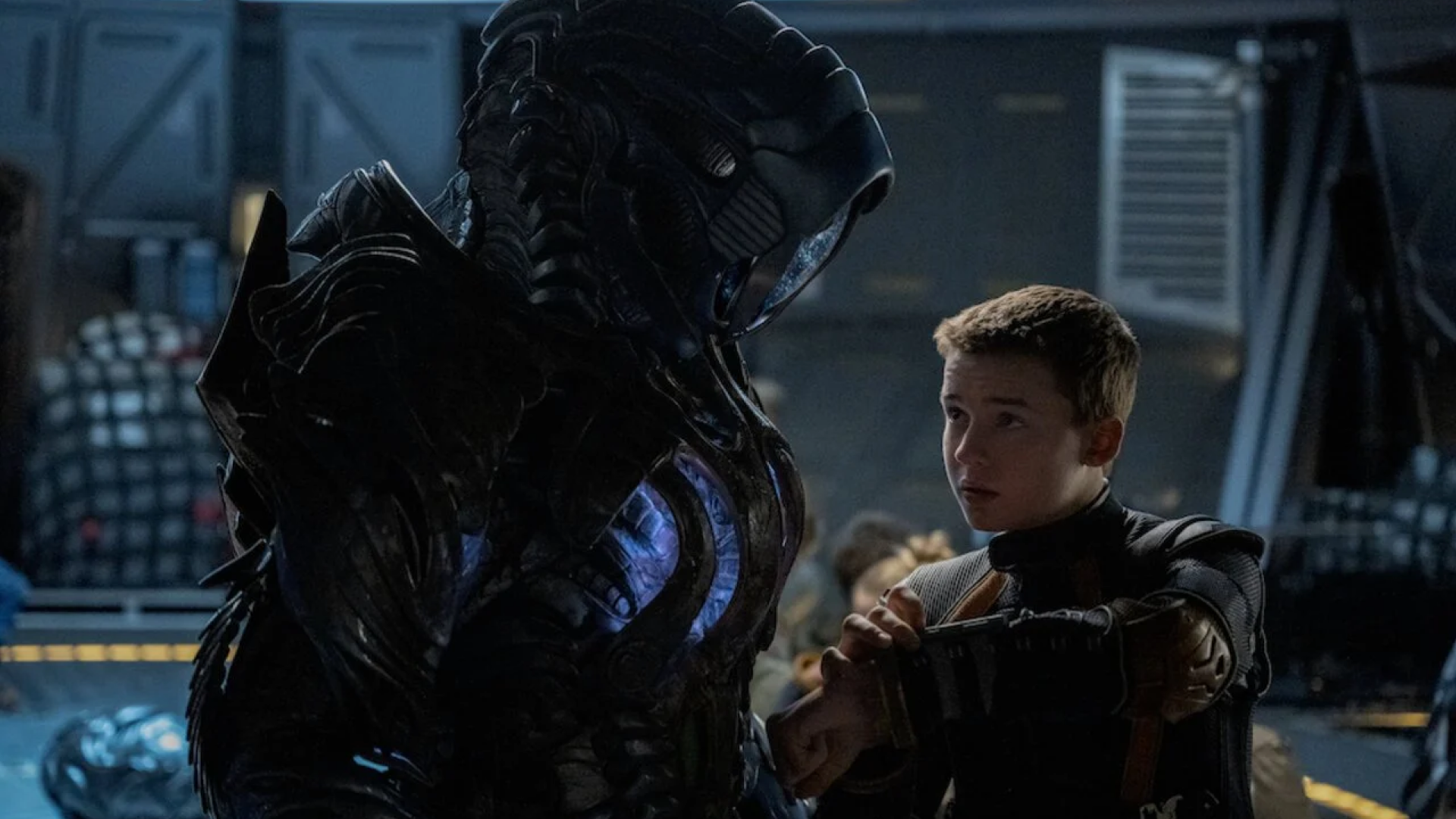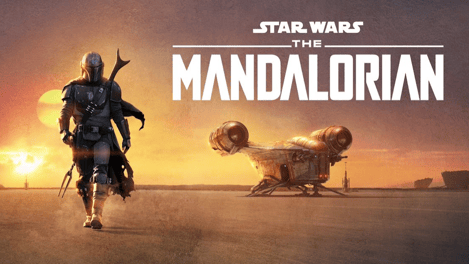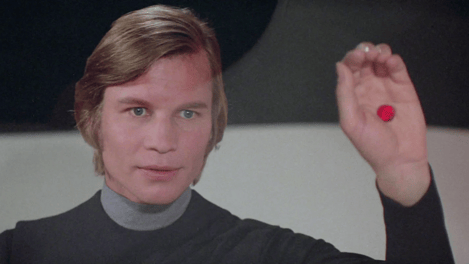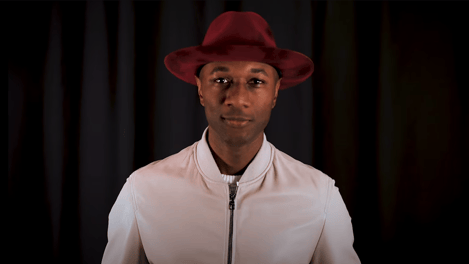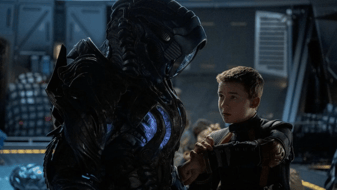
Restoring Lost Voices: How Respeecher Recreated Bill Mumy's Child Voice for 'Lost in Space'
The late '60s gave rise to a number of sci-fi hits, among them was the TV series "Lost in Space." Among its vibrant cast was child actor Bill Mumy who played the pivotal role of Will Robinson. Fast forward to the present, where Scary Robot Productions, led by CEO Dustin Adair, is crafting a video game inspired by this sci-fi classic. One of the major challenges facing was the fact that the voice is changing as we grow. Replicating the voice of a character from an era when voice recording quality was subpar is only the first step. Making an authentic-sounding AI model would be the real test of Respeecher’s ingenuity.
The Challenge
To recreate the voice of child actor Bill Mumy from "Lost in Space" for the video game, since he made his first recording when he was a kid and how his voice has changed. Since the quality of the original recordings from the '60s did not meet the standards for restoration, they could not act as reference material for the foundation of the voice model.
The Solution
Dustin, being a visionary, decided not to rely on the past. Instead, he turned to Respeecher's expansive Voice Marketplace. He began by recording specific lines of dialogue himself, using these as the source voice for the transformation. Then, delving into Respeecher's vast voice library, Dustin found an ideal match: a child’s voice that closely resembled the original actor's. By blending the source voice with this selected child’s voice, the result was an astonishing indistinguishable match.
"With Respeecher, we took a journey into voice transformation. Their technology, termed voice cloning, works like magic. You provide the target voice recording and they train their system. Once that’s done, Respeecher simply applies this model to the source voice. Remember when Luke Skywalker made that epic cameo in 'The Mandalorian'? It's the same magic!"
Highlighting the challenges with ADR, especially for children, it's clear why Respeecher's solution was a game-changer. With the unpredictability of parents, the changing voice of young actors, and varied acting skills in a studio setting, going about ADR the traditional way can be a minefield. But synthetic speech technology is revolutionizing this domain. Using just an hour's worth of recorded materials of a child’s voice, an adult actor can replicate their dialogue with impeccable authenticity.
This isn't just about replicating voices for a single project. STS technology has broader implications, especially for animated films. Characters in animated movies don't age. Imagine a character like Hiccup from "How to Train Your Dragon" — he has to retain his youthful voice in every scene of every movie, irrespective of the years that elapse between them. Respeecher's voice cloning guarantees this consistency, making it both convenient and effortless for production studios. In addition, the technology enables child voice actors to continue collecting royalties for their voices long after they've grown up
Wrapping Up
As Dustin and Scary Robot Productions discovered, with Respeecher, the possibilities are endless. Whether it's restoring voices from the past or crafting new ones for animated heroes, the future of voice technology is promising. For producers and creators navigating voice challenges, Respeecher offers a blend of innovation, authenticity, and convenience.
FAQ
AI in voice cloning analyzes existing recordings to recreate authentic voices for characters. This ensures high-quality, consistent voice performance for video games.
ADR for child actors is challenging due to changing voices, availability, and acting skills. AI voice technology addresses these issues with consistent and reliable solutions.
Respeecher offers cutting-edge AI technology that provides authentic, seamless voice recreation, solving challenges in ADR and ensuring voice consistency across projects.
Glossary
Voice cloning
Using AI technology to replicate a voice's unique attributes, enabling accurate voice recreation for diverse media projects.
Synthetic speech
AI-generated speech used in media, including animation, video games, and accessibility applications.
ADR (Automated Dialogue Replacement)
The process of re-recording dialogue to improve audio quality or replace voices, often needed in animation or video games.
Sci-fi voice restoration
Recreating or enhancing voices for classic sci-fi characters using AI-powered voice transformation tools.
Consistency in animation
Maintaining uniform voice quality for animated characters, achievable with synthetic voice technology even as actors age.
Unlocking New Possibilities with AI Voice Cloning
in Animation and Gaming
Discover how AI-powered voice transformation and synthetic speech enable authentic voice replication, solving challenges in animation and video game production.
The emergence of AI voice technology has revolutionized voice production for animation and gaming. By offering solutions like child voice replication and voice consistency in animation, AI tools ensure authenticity and efficiency in creative projects.
One notable application is the use of Respeecher's voice cloning to recreate the voice of child actors, as seen in Lost in Space. For Scary Robot Productions' video game adaptation, Respeecher delivered a seamless voice match for Bill Mumy's character, overcoming challenges like outdated audio quality and changing voice characteristics.
The broader implications of this technology include preserving classic voices and maintaining consistency in animated characters that never age. This ensures high-quality results and long-term creative flexibility, opening new opportunities for producers and content creators alike.
-
Voice Cloning for Gaming
AI-based voice cloning allows game developers to authentically recreate voices for characters, even those whose original actors are no longer available. This technology ensures that voices match the tone, style, and personality of the characters, providing an immersive gaming experience. It’s a key tool for both retro-inspired games and modern productions, offering unparalleled creative flexibility.
-
ADR Challenges Solved by AI
Traditional ADR, especially for child actors, often faces hurdles such as changes in voice due to aging, scheduling difficulties, and inconsistent performances. With synthetic speech technology, these challenges are mitigated. AI ensures that the voice remains authentic and aligned with the character’s needs, making it a reliable solution for dubbing and voice preservation in high-pressure studio environments.
-
Consistency in Animated Characters
In animated franchises, character voices must remain consistent, even across years or decades. Child voice AI preserves the youthful tone of characters regardless of the actor’s age or availability. This technology provides creators with continuity for storytelling, helping to maintain audience engagement while reducing the need for recasting or extensive re-recording.
